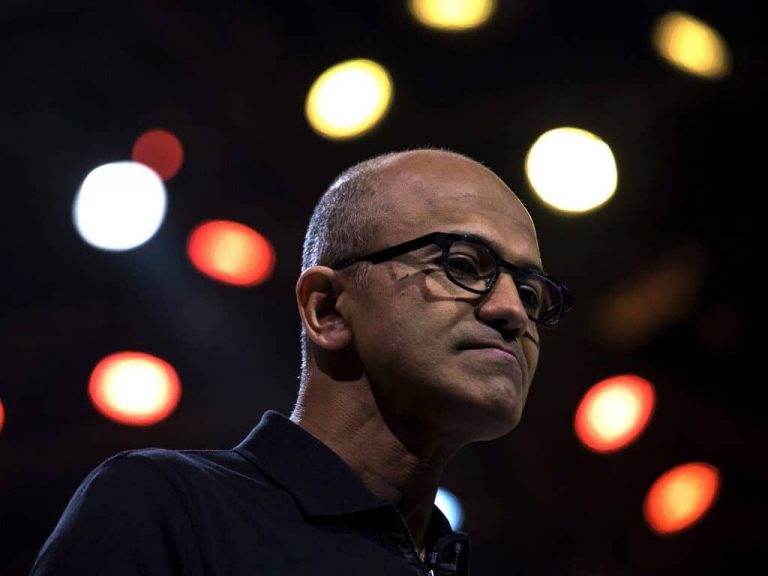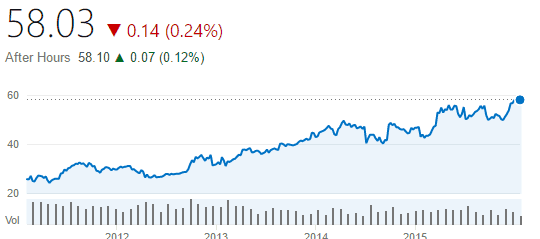It was February 4, 2014. Bill Gates, co-founder of Microsoft, announced that Steve Ballmer would be standing down as CEO of Microsoft, following an initial press release, and that Satya Nadella would be taking up the reigns of one of the largest technology giants. The change of leadership was met with optimism from Microsoft enthusiasts – citing a change from the somewhat harsh and what some would call an abusive leadership, into one more aligned to the modern working environment. Ballmer was known for his strong leadership, taking control when needed and being forceful to make changes, but he also brought Microsoft back to the top. He ensured that its product portfolio succeeded in all aspects – including Windows Phone.
When Nadella stepped in, he made a bold statement. That statement outlined the vision for his leadership, a term we’ve all come too familiar with, “Mobile-first, cloud-first,” a term that once gave hope to fans of the Windows phone ecosystem, one that enlightened enterprises looking for an alternative to Amazon’s cloud offerings and one for the greater Microsoft crowd – a renewed direction and a renewed focus. During the announcement of Nadella’s appointment as CEO of the company, Gates uploaded a YouTube video, in which he made the following statement:
Satya’s got the right background to lead the company during this era. There’s a challenge in mobile computing, there’s an opportunity in the cloud.
That statement follows the outlined vision that Nadella also made – mobile and cloud. Gates was correct in his statement, there was a challenge in mobile computing, both in the 2-in-1 space, the tablet space and the smartphone market. He was also right about the cloud, there was need for a third rival to Amazon and Google, someone that could offer something more, something different and meet the needs of enterprises.
More than 2 years on, where are we – as Microsoft enthusiasts, Microsoft as a company and consumers of its products? Actually, it seems we’re not much further forward.
Many believed that the company would succeed in the tablet market. Unfortunately, that has not been too successful. Android and even iOS are seeing growth in those areas, whereas Windows is having a slow paced walk behind them.
The company originally set a target of 1 billion devices running Windows 10 in 2 years; the company later shelved that target, citing reduced optimism in the tablet and mobile markets. That reduced optimism has proven accurate so far. Windows 10 itself has seen its own fair share of problems, from issues with privacy, security flaws and issues with certain devices such as Kindle Paperwhites. Not to mention the delays in rolling out Windows 10 Mobile to Windows Phone 8.1 devices and backtracking on which devices would receive it, followed by a further delay in rolling out the Anniversary Update. On top of these issues is also the big contender – the continuing decline in PC sales, as claimed by Gartner.
So, that leaves the question – is Satya Nadella hurting Microsoft in the long-run or is he the saviour that Bill Gates initially believed?
Bill Gates stated Nadella had “the right background to lead the company,” and that there’s a “challenge in mobile computing,” has Nadella lived up to the challenge? Does Nadella’s background help him in running the company?
Microsoft’s share price is at an all-time high. Investors are clearly happy with the company’s performance since the change of leadership. That is great news, the company is doing well. The fear we have, however, is that this high share price is a bubble – the share price suddenly rose around mid-July and had risen fairly consistently with minimal dips until the end of August, however, it looks like it is reaching its peak, with the line becoming smoother as the days go by. A large amount of the increased share price currently is based on Microsoft’s cloud offerings, its other product lines contributed minimally – Windows and PC sales are down, mobile has plummeted, tablets and 2-in-1s are barely gaining traction and even the Xbox division has been beaten by PlayStation consistently, although, it is still profitable and has made changes in an attempt to counteract this, with the Xbox One S, OS upgrades and Project Scorpio. It would be a fair assumption to say that the share price is based on current Azure performance, followed by expected performance in Windows 10 and Xbox. It is the expected performance that could be worrying.
The problem with the share price being mostly based on the cloud is problematic for 2 reasons – for one, Microsoft is not the leader in cloud, Amazon is, and that doesn’t look set to change. For all we know, Amazon could come out with something amazing that would entice Azure customers to Amazon’s service, this would plummet Microsoft’s shares immediately. While Microsoft does have some well-performing divisions that still make money, such as Xbox and Surface, it still detracts from the areas it is well-known for – Windows and PCs. Xbox has struggled over the last couple years, with Sony’s PlayStation leading in sales. Could the Xbox One S and Project Scorpio change this? We’ll have to wait and see.
Resentment from consumers about Nadella’s leadership is rife. On a daily basis comments are seen saying how he’s “Mr Retrenchment” or he’s setting up Microsoft for a fall. This marks a stark change from the original perception where people believed he would be the one to bring real change, the one to bring what consumers wanted. Consumers are clearly not happy with Nadella’s stance, and rightly so. In fact, the CEO seems perfectly content with turning the company into an enterprise-only machine. The consumer side has fallen through, with several issues with Windows 10, slow rollout of updates and retrenchment for consumers in the mobile space.
Microsoft’s focus is enterprise, not consumers. Consumers are just a bi-product of being a public-facing company from its previous ancestry.
One of our contacts at Microsoft informed us that Microsoft is committed to the enterprise space, stating that is where the money is – not the consumers. This alone shows why consumers have a valid reason to be discontent with what they’re currently receiving.
At the end of the day, it would appear that Nadella has met only one of Gates’ goals – the cloud. On the other side of the coin, mobile computing, Nadella has fallen flat on his face with empty promises of being “mobile-first” when we haven’t really seen anything mobile arrive, with the exception of Microsoft’s app portfolio being on competing platforms such as Android and iOS, ignoring its customers on its own platform, followed by slow traction in the tablet market. Windows phones have received a little bit of love, indirectly, thanks to the Universal concept of Windows 10, with some OS features making their way down to the mobile platform.
With all this in mind, Satya Nadella has failed in his leadership so far to meet Bill Gates’ vision for where Microsoft should be headed. Microsoft is stood on rocky ground, with which its competitors could, in theory, place a crack in quite easily. Could Nadella turn things around? Certainly. With the right priorities being set, Microsoft could once again win the hearts of consumers, however, whether Nadella is willing to do so is a different story.
Let us know what your thoughts on Nadella’s leadership are in the comments below!



